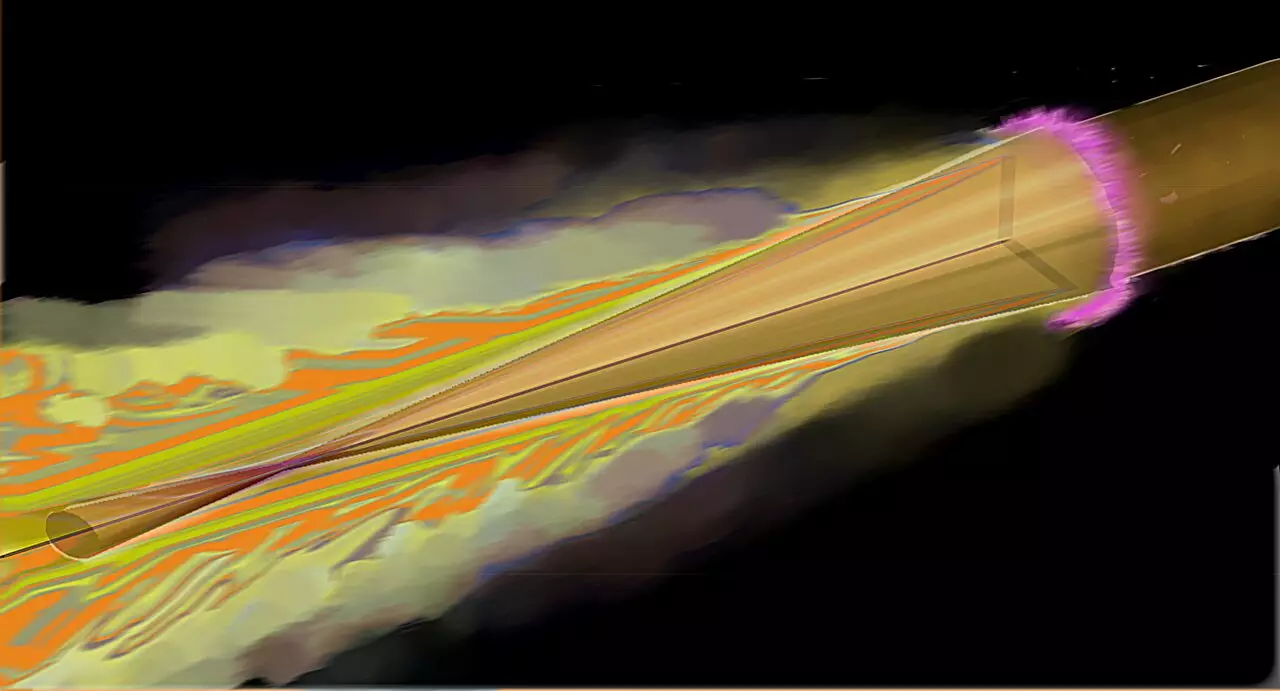Stars and planets are far more than mere celestial bodies; they are complex systems characterized by extreme pressures and temperatures that defy ordinary human experience. Inside stars, the conditions can reach staggering heights of several million degrees with pressures escalating to millions of bars. Understanding these phenomena is crucial not only for astrophysics but also for broader scientific applications, including fusion research. Recent advancements by an international team led by the Helmholtz-Zentrum Dresden-Rossendorf (HZDR), in collaboration with the European XFEL (X-ray free electron laser), have revolutionized our capability to replicate and examine these extreme conditions in a laboratory setting.
Traditionally, simulating the extreme conditions found within celestial bodies necessitated the use of the world’s most powerful lasers, like those at the National Ignition Facility (NIF) in California. However, these facilities are limited in number and the opportunities for experimental setups are sporadic at best. The recent innovative approach taken by the HZDR researchers utilizes a much smaller, yet incredibly effective, laser technology. At the core of this breakthrough lies a minuscule copper wire, thinner than a human hair.
By firing ultra-high-energy laser pulses at this slender copper wire, scientists can create shock waves that compress the material and elevate its temperature to levels akin to those enveloping a star’s shell or situated within a planet’s core. Although these conditions are fleeting—lasting only nanoseconds—they are meticulously studied with advanced measurement techniques, notably the ultra-powerful X-ray flashes from the European XFEL.
The unique strategy of combining short-pulse lasers with X-ray lasers has proven to be a game-changer in understanding the behavior of materials under extreme conditions. In their groundbreaking experiment, the research team fired laser pulses at a 25-micrometer-thick copper wire, generating a powerful shock wave that traveled through the material. According to Dr. Alejandro Laso Garcia, the lead author of the study, it is precisely the synergy between the short-pulse laser and the X-ray laser that allows unprecedented observation of these rapid events.
By meticulously adjusting the time intervals between laser impacts and the subsequent X-ray emissions, the team created what can be likened to a cinematic “X-ray film” of the violent interactions within the wire. This experimental setup revealed fascinating dynamics: as the laser pulse generated a local shock wave, high-energy electrons surged along the wire’s surface. This cascade of events resulted in additional shock waves converging at the wire’s center, leading to extraordinary pressures and temperatures—calculations suggest densities eight to nine times greater than that of regular copper at ambient conditions.
The findings from this experiment are significant in multiple realms of scientific inquiry. The extraordinarily high pressures, peaking at approximately 800 megabars (equivalent to 800 million times atmospheric pressure), and temperatures exceeding 100,000 degrees Celsius illuminate conditions analogous to those found within the corona of white dwarf stars. These insights could offer crucial data for understanding not only our own solar system but also distant exoplanets that share similar conditions.
Furthermore, the implications extend beyond astrophysics. As highlighted by Dr. Toma Toncian, head of the HIBEF department, the methodology sets the stage for exploring other material compositions, such as iron and various hydrocarbons, further bridging the knowledge gap between cosmic phenomena and terrestrial materials. The approach taken could significantly advance fusion research, facilitating observations that are vital to iterating energy production methods that involve high-performance lasers.
With aspirations that reach far beyond the current experiment, the research team is keen on testing various materials to expand the understanding of the fundamental reactions capable of occurring under intense conditions. The practical applications of this research are particularly compelling in the context of emerging energy initiatives focusing on fusion power.
The team envisions utilizing their novel methodological framework to observe how laser pulses interact with fuel capsules composed of frozen hydrogen—a key technology for harnessing fusion energy. As several global entities vie for advancements in fusion energy, the insights gleaned from this research may eventually contribute to sustainable and efficient energy solutions.
The pioneering work by the HZDR and European XFEL consortium marks a significant leap forward in our capacity to simulate and study the extreme environments prevalent within stars and planets. The ongoing exploration of high-energy densities and temperatures holds expansive potential not only in understanding the universe but also in paving the way for innovative developments in energy science.


Leave a Reply